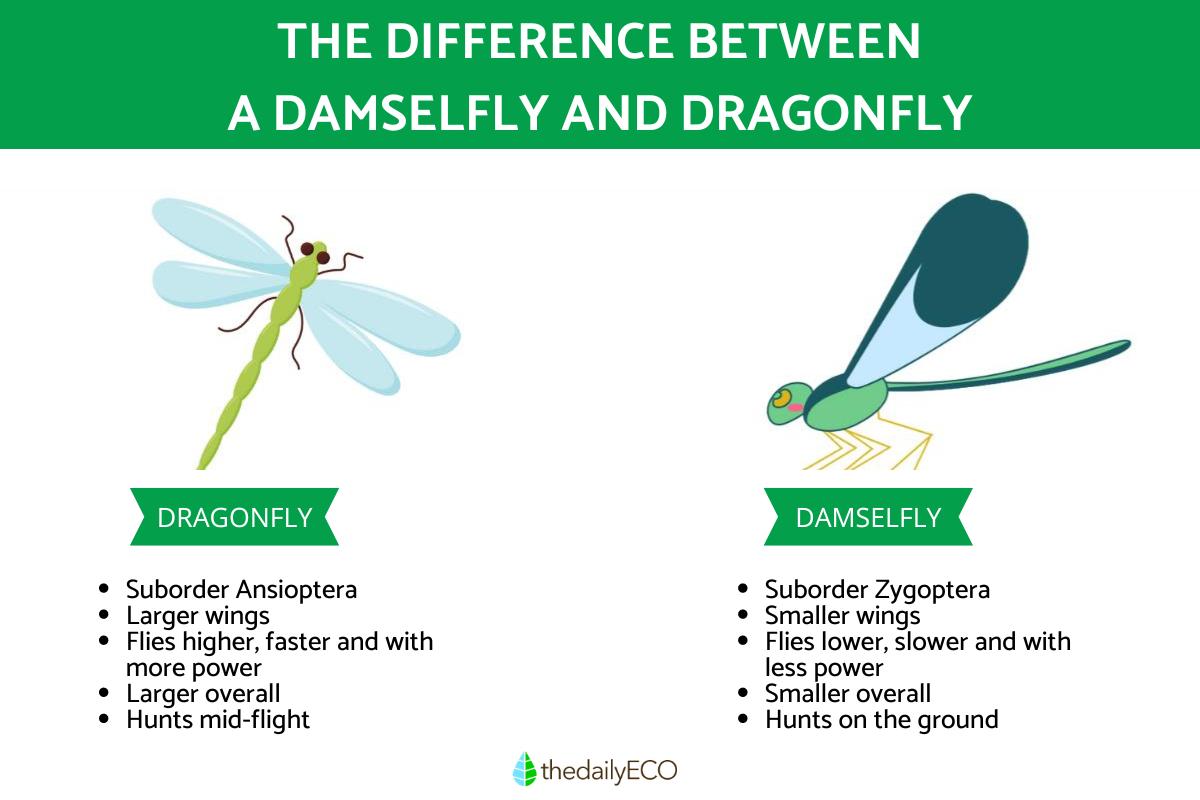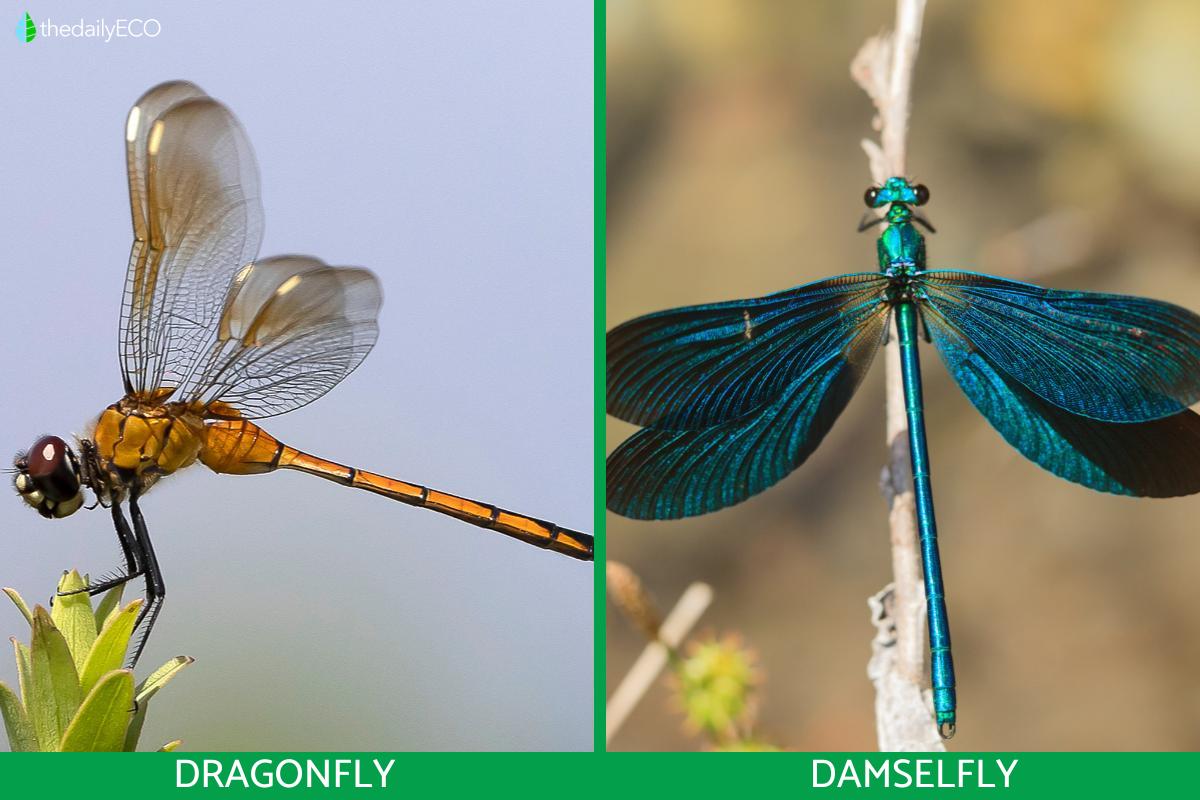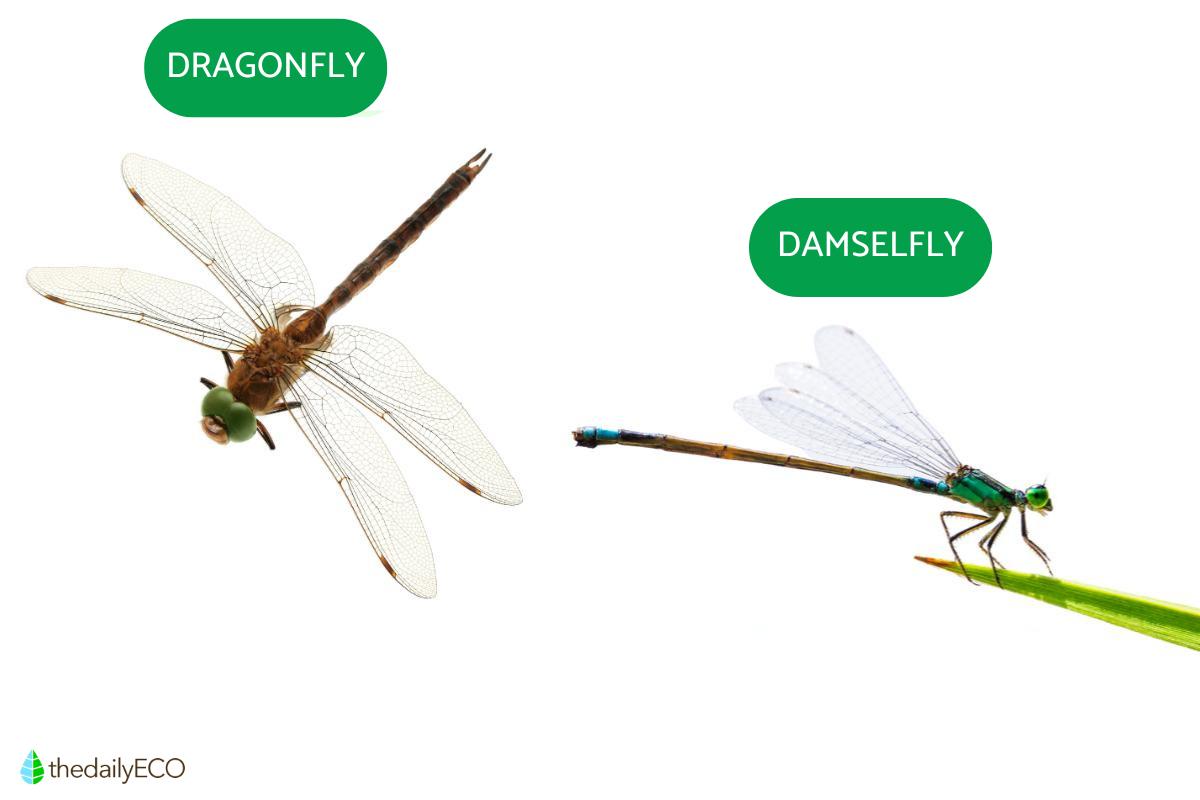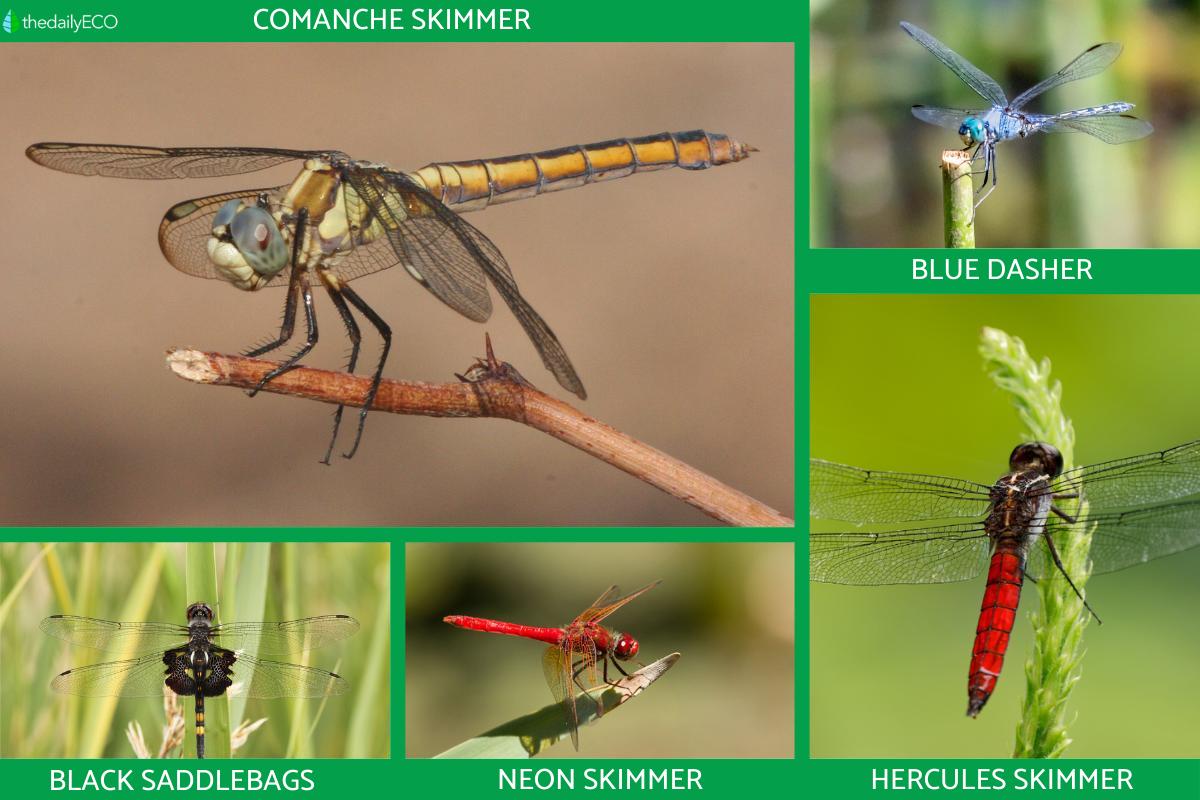Difference Between a Damselfly and Dragonfly


At first glance, damselflies and dragonflies seem to be very similar insects. While both are part of the order Odonata, they have some key differences. Such differences between dragonflies and damselflies can be seen in their wings, flight ability, body type and behaviors. While it may be difficult to distinguish between these two insects from far away, we can see they have some quite distinctive characteristics when examined up close. To know more about how to distinguish them, thedailyECO looks at the difference between a damselfly and a dragonfly.
Taxonomy
While they are of the same order (Odonata), the first difference we can see between dragonflies and damselflies is their taxonomic categorization. Within the order Odonata, these insects are found in:
- Dragonflies: belong to the suborder Anisoptera.
- Damselflies: belong to the suborder Zygoptera.
Discover whether dragonflies bite or sting with our related article. Below, we look at some of the key characteristics and behaviors of these insects to see their differences.
Wings
One of the key differences between a damselfly and a dragonfly is their wing formation and morphology:
- Dragonflies: their wings are wider at the back than at the front and are comparitively larger than those of damselflies. They also tend to lie horizontally and do not fold their wings when resting.
- Damselflies: both pairs are exactly the same size and are smaller than those of dragonflies. Damselflies tend to have wings that are closer to the body and do fold their wings.
In the photo below, you can see a closeup of both dragonfly and damselfly wings for comparison:

Flight
The differences in the wings of these insects means their manner of flight also differs:
- Dragonflies: due to their larger wings, they can fly higher and faster with a more powerful propulsion. They can also fly for longer and more sustained periods.
- Damselfly: their flight ability is less powerful, softer and lower to the ground. In addition, their duration of flight is shorter and less sustained.
Body
In addition to their wings, the main body of the insect to which they are attached differs in form:
- Dragonflies: the body of dragonflies is not as cylindrical and is generally of greater length. They are larger in overall size.
- Damselflies: the body of damselflies is completely cylindrical and they measure less than dragonflies. They are smaller in overall size.
The photo below gives an idea of the body length and shape differences between a damselfly and a dragonfly.

Hunting behavior
Both the damselfly and dragonfly are predatory insects, but their method of hunting is not the same:
- Dragonflies: they tend to hunt while in flight.
- Damselflies: they usually hunt while on the ground or at rest, since their prey is mostly static.
Similarities between the damselfly and dragonfly
Now that you know a little about the differences between both insects, let's look at their similarities:
- Diet: they are both insectivores, meaning they eat other insects.
- Taxonomy: they belong to the order Odonata .
- Habitat: we generally find them near bodies of water.
- Behavior: they are both flying insects with a similar morphology.
Examples of dragonfly species
There are more than three thousand species of dragonflies distributed throughout the world. Below we mention just a few (with photos below):
- Comanche Skimmer (Libellula comanche): the Comanche Skimmer Dragonfly is found in springs, rivers and medium-sized bodies of water. It is found in North America and South America.
Blue dasher (Pachydiplax longipennis): measures between 44 and 50 mm in width. Its wings are transparent with a smoky mark at the base. Its chest is blue in both males and females.
- Black saddlebags (Tramea lacerata): flies at over two metres high, but rarely below that height. Its body is black. They fly north in spring, with males often gathering in hives to eat together. Their wings have black spots, which make them look like they are carrying saddlebags, hence their common name.
- Neon skimmer (Libellula croceipennis): the neon skimmer dragonfly is bright red and has wings with yellowish and amber areas.
- Hercules skimmer (Libellula herculea): distributed from Mexico to Argentina. It tends to rest on branches with its body bent slightly forward. Males limit their habitats to shaded puddles most of the time. It is very skilled at calculating the trajectory of its prey to catch it in flight.
Discover more about other species of insects with how big is a queen bee?

Examples of damselfly species
Now we look at some characteristic species of damselfly (with photos below):
- Common blue damselfly (Enallagma cyathigerum): as its name suggests, males have a blue coloration. Females can be blue, but there are also other color morphs such as yellow or green. It is common in Europe and Asia. It has a single black stripe on its thorax, whereas most other damselflies generally have two.
- American rubyspot (Hetaerina americana): has wide wings and a scarlet red color at the base of the wings of the males. Its body is also in these tones, brown with red or copper reflections. It is common to find it from North America to Honduras.
- Emerald spreadwing (Lestes dryas): has a bright metallic green color reminiscent of the gemstone of the same name. It has a slender body and long, very thin legs. Females tend to be a little more blueish and males brighter green. They tend to stay in still waters rather than near currents.
- Stream bluet (Enallagma exsulans): measures between 29 and 37 mm in length. Like many blue damselflies, they seek out ponds and lakes for their habitat. Males have a blue tip on their abdomen, a feature females rarely also have. If you want to watch their flight, it is best to wait until summer to enjoy their wonderful spectacle. Males are bright blue, while females have a greenish-blue or yellowish-blue color. Females are much duller. They are found in southeastern Canada and the United States.
As we have said, both damselflies and dragonflies are predatory insects. Learn the difference between predators and prey in our related guide.

If you want to read similar articles to Difference Between a Damselfly and Dragonfly, we recommend you visit our Facts about animals category.
- Hansen, G. (2016). Becoming a Dragonfly. United States: ABDO Publishing Company.
- Dragonflies and damselflies of the department of Meta, Colombia. (2017). Colombia: UNIVERSIDAD DEL BOSQUE.









